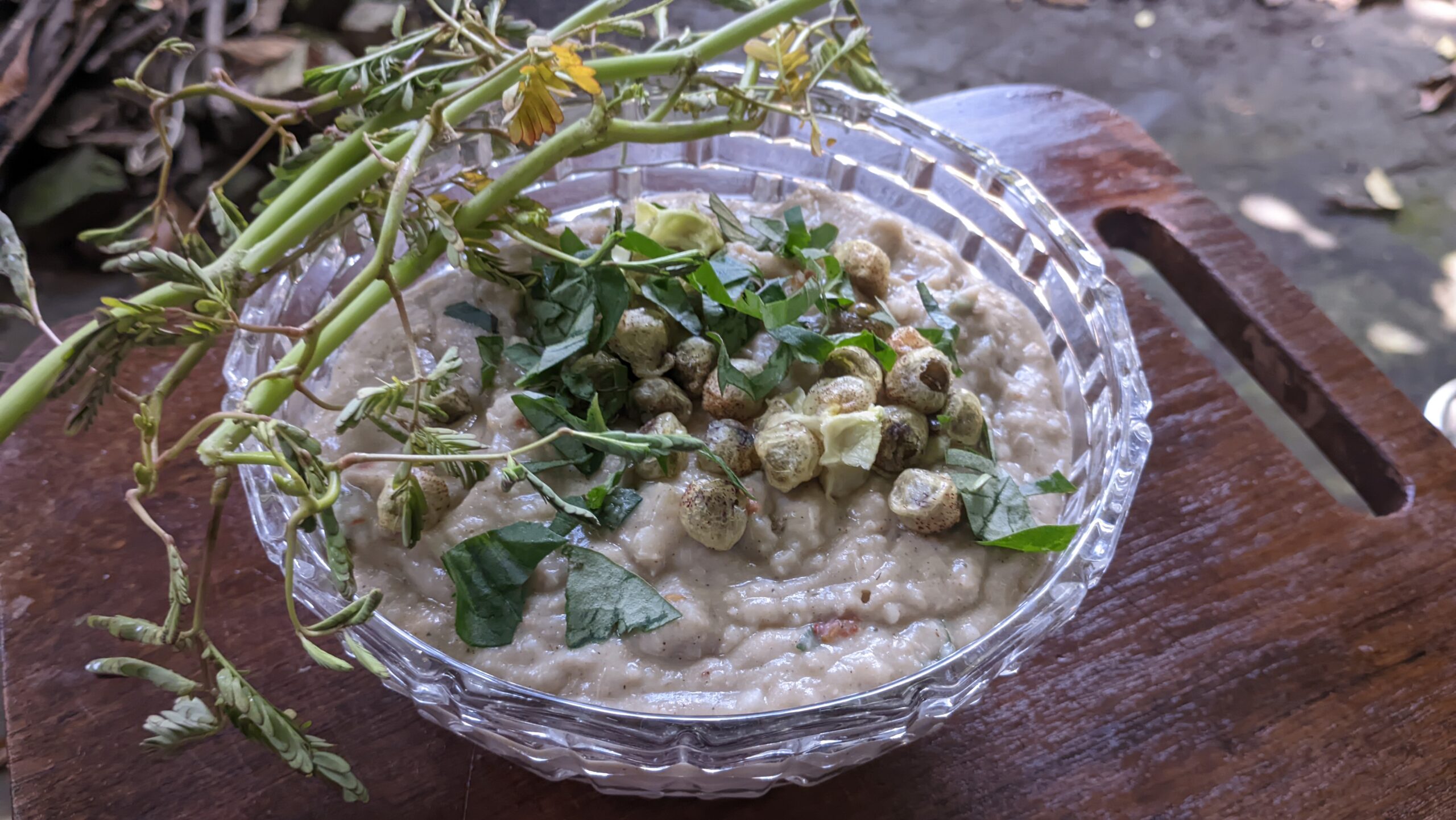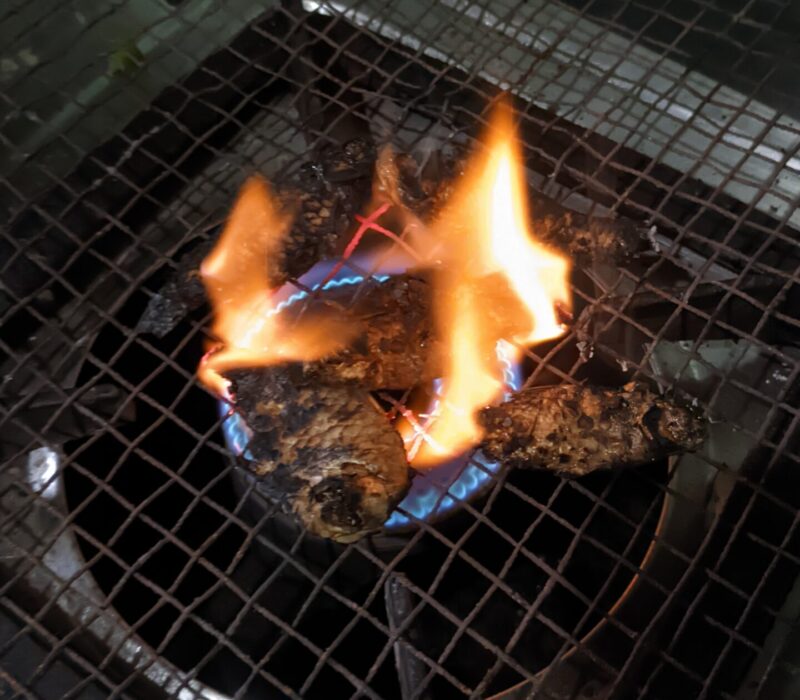
Eeromba is a class of spicy everyday dishes, a monsoon staple in the Imphal valley where I’m from. It is made of boiled vegetables, seasoned with fermented fish, and served with herbs as condiments.
Pan eeromba, which is a variation made with taro or colocasia, is commonly cooked in the homes of the Meitei people, the same ethnic group I belong to in Manipur. This is a favourite of mine, a dish I’ve been eating as long as I can remember. It’s the kind of dish that makes me eat a mountain of rice!
While there are multiple types of pan, ‘mukhi’ pan—starchy and smooth in texture—is considered best. Meitei or Manipuri cuisine is not typically flavoured by masalas and spices. Hence it is key that the ingredients are fresh and of good quality. This is what differentiates eeromba in Manipur from eeromba elsewhere.
| Pan (taro, colocasia) | ½ kg |
|---|---|
| Dry chillies | 10, or to taste |
| Fresh u-morok (ghost pepper) | 1 large or ¼ th from the open tip |
| Ngari | 4, medium or large |
| Thangjing | 1 big fruit |
| Ekaithabi | 4 large plants |
| Toningkhok (chameleon plant) | 5-6, medium (stalk with leaf) |
What You Will Need
A deep, flat-bottomed pan, a pestle or a steel tumbler to mash ingredients and other utensils and equipment typically available in most kitchens will suffice.
Instructions
Wash the taro (arbi, colocasia) well to remove traces of any soil.
Pressure cook it for five to six whistles. Remember the taro must be really soft.
Meanwhile, boil 10 dry chillies—adjust according to your heat tolerance—until they are soft and crushable.
Once the taro has cooled a little, squeeze the tubers from one end to remove the peel. If this method does not work, remove the skin as you would for a boiled potato.
Roast the ngari, or fermented fish, on both sides with the flame on high until it starts to burn. Alternatively, you can steam it such that it is fully soft.

Add the boiled chillies, fresh u-morok, ngari and salt into a deep, flat-bottomed steel pan. Crushed them into a paste, using your hands, a pestle, or a steel tumbler. Add a few drops of water if the mixture is too dry to crush as it is.
A bit of fresh u-morok will add an amazing flavour without making the dish extremely spicy for those with lower tolerance of heat.
Add the taro to the ngari-chilli mix and mash it. Again, you could use your hands to get a better feel of the consistency, but a pestle or end of steel tumbler also works.
Keep adding water until the texture is smooth, neither watery nor too thick. When you ladle some and serve, the mixture should flow out easily, without sticking to the bottom or sides.
Each time you add water in the previous step, adjust for salt.
Peel the thangjing and separate the pods, or maru, and add it to the eeromba mix. You can also add the white soft membranes. Please be very careful as you handle thangjing, as the skin is covered in spikes.
Roughly cut the toningkhok leaves, so that too much of the juice does not ooze on to the chopping board.
Clean the ekaithabi; remove the spongy coverings and roots.
Serve the pan eeromba with hot steamed rice, and toningkhok and ekaithabi as akotpa (condiments to be eaten with every scoop of eeromba).
Ammo Angom is the founder of Living Manipur, living a dream journey to reconnect with his roots in Manipur, its people, and the land. Living Manipur curates travel experiences for the socially conscious adventurers to discover and experience Manipur.
You must be logged in to rate this recipe.

Sign in with email
